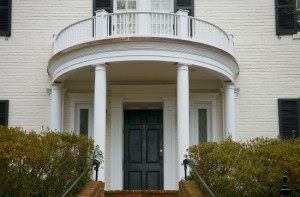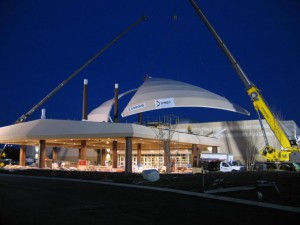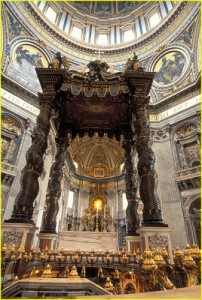What is the difference between a port cochere, a canopy, a portico, and a baldachino? Each one of these terms describes a structure that is usually subsidiary to the main building and that serves both an ornamental and practical function. The practical functions include protection from the weather; the ornamental functions include providing aesthetically pleasing architectural features.
From the times of ancient Greece to the present, a portico (from Italian) has served as a walkway and/or porch in the front of a building. The roof structure can be supported by columns or walls.

Often larger than a portico, a porte-cochère (English and French: “coach gate”; also called a “carriage porch”) is a covered structure at the primary or secondary entrance to a building that allows occupants to exit a horse and carriage (or motor vehicle) while being protected from the weather. The picture below shows the porte-cochere at the Rice House in Richmond VA designed by Richard Neutra. The rectilinear design complements the lines of the exquisite home.
![rice-house-exterior-small[1] Porte-Cochere at the Rice House Designed by Richard Neutra](https://www.cmrp.com/blog/wp-content/uploads/2012/06/rice-house-exterior-small11-300x225.jpg)

Lastly, A baldachin, or baldaquin (from Italian: baldacchino), is most commonly found over high altars in cathedrals. What began as a cloth canopy of state over an altar or throne has evolved into a more permanent feature within larger buildings.

Architectural curved steel often provides the structural support for these features. At times the steel is exposed; at times it is covered. In either case, curved steel allows architects to design architectural elements that are both functional and beautiful.







